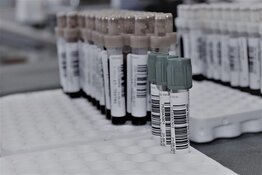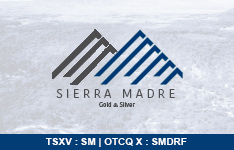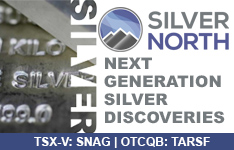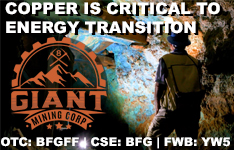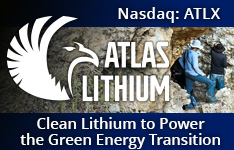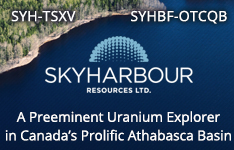Late-stage biopharmaceutical company Reviva Pharmaceuticals Holdings Inc. (RVPH: NASDAQ) reported its financial results for the year ended December 31, 2024, alongside updates on its lead clinical program for brilaroxazine, a once-daily serotonin-dopamine signaling modulator aimed at treating schizophrenia. The company posted a net loss of approximately US$29.9 million, or US$0.90 per share, narrowing from the prior year's net loss of US$39.3 million, or US$1.65 per share. Cash and cash equivalents stood at approximately US$13.5 million at year-end, down from US$23.4 million a year earlier. In December 2024, Reviva completed a public follow-on offering, raising gross proceeds of approximately US$18 million.
Recent topline results from the long-term open-label extension (OLE) of the Phase 3 RECOVER trial were presented at the 2025 Congress of the Schizophrenia International Research Society. These results indicated that brilaroxazine sustained favorable safety and efficacy profiles over a one-year treatment period in patients with schizophrenia. The pooled OLE data demonstrated statistically significant reductions in Positive and Negative Syndrome Scale (PANSS) total scores, with an 18.6-point average decrease from baseline (71.6 to 53), as well as improvements across positive symptoms, negative symptoms, and personal and social functioning (all p ≤ 0.0001).
As the news release documented, treatment adherence was favorable, with a 35% discontinuation rate primarily due to non-drug-related factors such as withdrawal of consent (22%) or loss to follow-up (7%). Only 1.6% discontinued due to treatment-related adverse events (TRAEs). The most common TRAEs were weight increase (3.2%), insomnia (1.8%), and somnolence (1.6%), and no drug-related serious adverse events were reported. These findings build on earlier double-blind data from the RECOVER-1 study, where brilaroxazine met its primary endpoint with a 10.1-point reduction in PANSS total score versus placebo (p<0.001).
Reviva also presented speech latency data at the CNS Summit in November 2024 and expects to release the full OLE dataset, including vocal and blood biomarker results, in the second quarter of 2025. The company plans to initiate a registrational Phase 3 RECOVER-2 trial in mid-2025, pending additional financing. A potential New Drug Application (NDA) submission for brilaroxazine in schizophrenia is targeted for the fourth quarter of 2026.
Central Nervous System Therapeutics
The central nervous system (CNS) therapeutics market experienced a significant resurgence heading into 2025, reversing a decade-long decline. Research and Markets, in a report from the start of the year, estimated the global CNS therapeutics market at US$144.3 million in 2024, with projections reaching US$431.0 million by 2035. The report cited several contributing factors, including "rising prevalence of neurological disorders, improvements in drug development and approvals, increased investments in R&D, growing telemedicine and digital therapeutics adoption, and growing use of personalized medicine."
By therapeutic segment, mental health treatments accounted for the largest share of global revenue in 2024, with schizophrenia, depression, and anxiety noted as leading contributors. Research and Markets also stated that "the neurodegenerative diseases segment is predicted to grow at the fastest CAGR during the forecast period," driven by conditions such as Alzheimer's and Parkinson's disease. Meanwhile, CNS stimulants led by revenue due to the increasing demand for ADHD treatments, while the anticonvulsants segment was projected to expand rapidly given its broad use in epilepsy, bipolar disorder, and neuropathic pain.
Alliance Global Partners issued its analysis on April 1, maintaining a Buy rating and setting a US$16 price target.
On March 26, The Pharma Letter wrote that the CNS market was projected to exceed US$80 billion in global sales in 2025, reaching this level for the first time since 2013. This performance would make CNS the fifth-fastest growing therapeutic area, according to GlobalData. The report emphasized that "the revival of CNS drug development [was] being fueled by advancements in neuroimmunology and neurodegeneration," with innovation shifting beyond traditional dopamine and serotonin pathways.
Pharmaceutical Technology, in an article published on April 1, highlighted the sector's broader turnaround, citing a return to pre-2013 sales levels and forecasting US$82.8 billion in CNS-related revenues for 2025. According to GlobalData's Sales and Forecast Database, this figure reflected an 8% increase year-over-year, marking the strongest growth rate in over a decade. Pharmaceutical Technology attributed the long period of stagnation to "the high cost, complexity, and risk of drug development," as well as high-profile trial failures in areas such as Alzheimer's and ALS. The article noted that these setbacks led many pharmaceutical firms to deprioritize CNS research in favor of more stable markets.
In addition to advancements in multiple sclerosis therapies, such as monoclonal antibodies for relapsing and progressive forms of the disease, the article pointed to renewed interest in NMDA receptor modulators and psychedelic-assisted therapies for treatment-resistant psychiatric conditions. "These emerging therapies," the outlet stated, "offer potential breakthroughs for psychiatric conditions," signaling a wider shift in CNS drug development priorities.
Reviva Highlights Expanded Pipeline and Clear Regulatory Path for Brilaroxazine
According to Reviva's December 2024 investor presentation, brilaroxazine's multi-receptor mechanism may offer advantages over current schizophrenia treatments, which often struggle with suboptimal efficacy and poor adherence due to metabolic and neurological side effects. Brilaroxazine demonstrated reduced cytokine levels and prolactin hormone changes in clinical trials, and its low drug-drug interaction profile may support long-term use in a population frequently managing comorbidities.
Although D. Boral reduced its 12-month price target from US$15 to US$8 due to anticipated dilution, the firm maintained a Buy rating and reiterated belief in the asset's potential, calling it a "powerful mediator of inflammation" with broader utility in CNS disorders.
The planned RECOVER-2 trial is designed to replicate the successful RECOVER-1 Phase 3 trial but will replace the 15 mg dose with a 30 mg dose and will focus on further validating safety and efficacy data. Reviva stated that most non-clinical requirements for NDA submission are complete, creating a defined regulatory pathway.
In addition to schizophrenia, Reviva is exploring brilaroxazine's potential in inflammatory diseases such as pulmonary arterial hypertension (PAH), idiopathic pulmonary fibrosis (IPF), and psoriasis. The company has received an Orphan Drug Designation from the U.S. FDA for brilaroxazine in both PAH and IPF, and a Phase 2 trial in psoriasis is expected to begin later in 2025.
The combined clinical data and biomarker support for brilaroxazine position the candidate as a differentiated asset in a market where current therapies often leave negative symptoms and long-term adherence unaddressed. As Reviva moves toward potential registration studies, upcoming trial initiations, data releases, and regulatory filings may serve as key inflection points for stakeholders.
Analysts Highlight Strong Phase 3 Data and Long-Term Promise for Brilaroxazine
Alliance Global Partners issued its analysis on April 1, maintaining a Buy rating and setting a US$16 price target. The firm valued brilaroxazine for schizophrenia at US$12 per share, with additional upside from other indications. Analysts wrote, "The OLE trial showed excellent data from its primary endpoint, change in PANSS score from baseline," citing a -20.8 point average reduction at the 50mg dose. They also emphasized brilaroxazine's favorable side effect profile, noting that only 1.6% of patients discontinued due to drug-related effects. Based on these findings, AGP stated that "brilaroxazine appears safe and effective," and projected global sales of US$750 million by 2030 for the schizophrenia indication.
D. Boral Capital also expressed optimism in its April 1 report, underscoring brilaroxazine's differentiation from current therapies. "Brilaroxazine met its primary endpoint in the Phase 3 schizophrenia trial at the 50 mg dose, achieving a statistically significant 10.1-point reduction in the PANSS total score," the firm reported.
Roth assigned a CA$7 price target, stating, "Such a narrative underpins our bullish view of the company's stock despite acknowledging the persistent financial overhang."
They highlighted brilaroxazine's "clean profile," referencing its low incidence of extrapyramidal symptoms and metabolic side effects. Although D. Boral reduced its 12-month price target from US$15 to US$8 due to anticipated dilution, the firm maintained a Buy rating and reiterated belief in the asset's potential, calling it a "powerful mediator of inflammation" with broader utility in CNS disorders.
Roth Capital reiterated this confidence on April 4, noting that brilaroxazine "delivered benefits against positive, negative, and cognitive symptoms in treatment-resistant schizophrenia patients." Roth assigned a CA$7 price target, stating, "Such a narrative underpins our bullish view of the company's stock despite acknowledging the persistent financial overhang." The research cited a January 8 report from Research and Markets, that stated brilaroxazine demonstrated compelling therapeutic benefits in a global Phase 3 study for schizophrenia.
 Streetwise Ownership Overview*
Streetwise Ownership Overview*
Reviva Pharmaceuticals Holdings Inc. (RVPH: NASDAQ)
Roth also highlighted the drug's long-term safety profile as presented at the 2025 Schizophrenia International Research Society (SIRS) Congress. Results from 113 patients who completed 52 weeks of treatment in the open-label extension showed a pooled PANSS total score reduction of 18.6 points, with positive and negative symptoms improving by -5.2 and -4.5 points, respectively. These outcomes were described as both "clinically meaningful and statistically significant."
Ownership and Share Structure
Refinitiv reports that 7.55% of Reviva Pharmaceuticals is held by management and insiders. Of them, Laximarayan Bhat holds 5.33% and Parag Saxena owns 1.87%.
Strategic entity, Vendanta Partners LLC, holds 3.07%, while Institutions hold 21.88%. Of them, Heights Capital Management Inc holds 5.25%, Millennium Management LLC holds 3.87%, The Vanguard Group has 2.97%, Armistice Capital owns 2.93%, and Sconfield Stratetic Advisors has 2.27%. The rest is retail.
Reviva has 41.63 million free float shares and a market cap of US$26.25 million. The 52 week range for the company's stock is US$0.4950 - 4.2800.
| Want to be the first to know about interesting Biotechnology / Pharmaceuticals investment ideas? Sign up to receive the FREE Streetwise Reports' newsletter. | Subscribe |
Important Disclosures:
1) James Guttman wrote this article for Streetwise Reports LLC and provides services to Streetwise Reports as an employee.
2) This article does not constitute investment advice and is not a solicitation for any investment. Streetwise Reports does not render general or specific investment advice and the information on Streetwise Reports should not be considered a recommendation to buy or sell any security. Each reader is encouraged to consult with his or her personal financial adviser and perform their own comprehensive investment research. By opening this page, each reader accepts and agrees to Streetwise Reports' terms of use and full legal disclaimer. Streetwise Reports does not endorse or recommend the business, products, services or securities of any company.
For additional disclosures, please click here.



